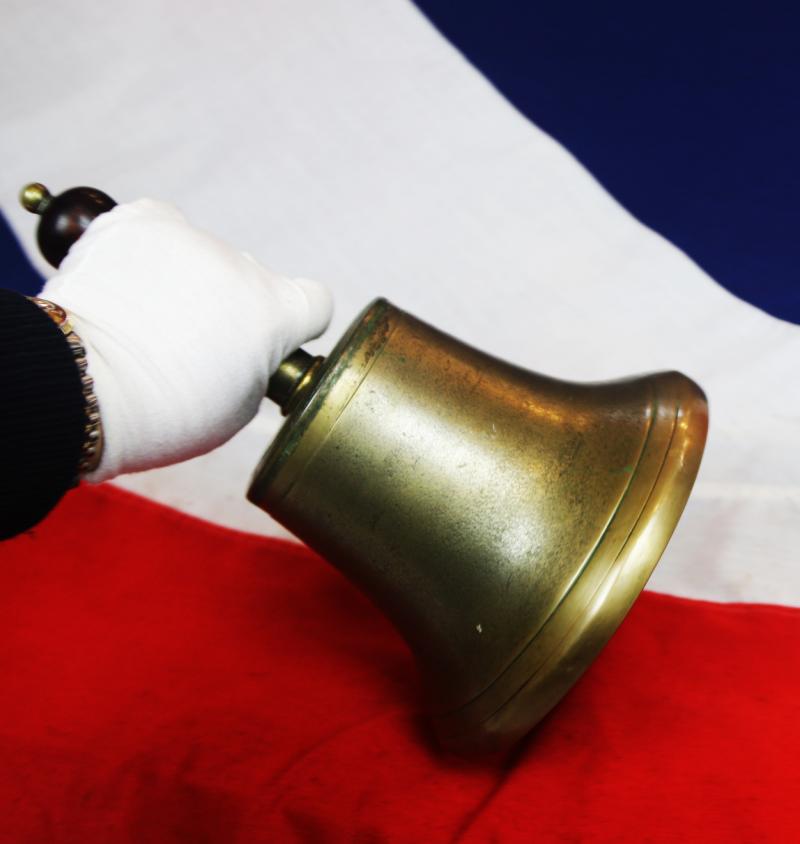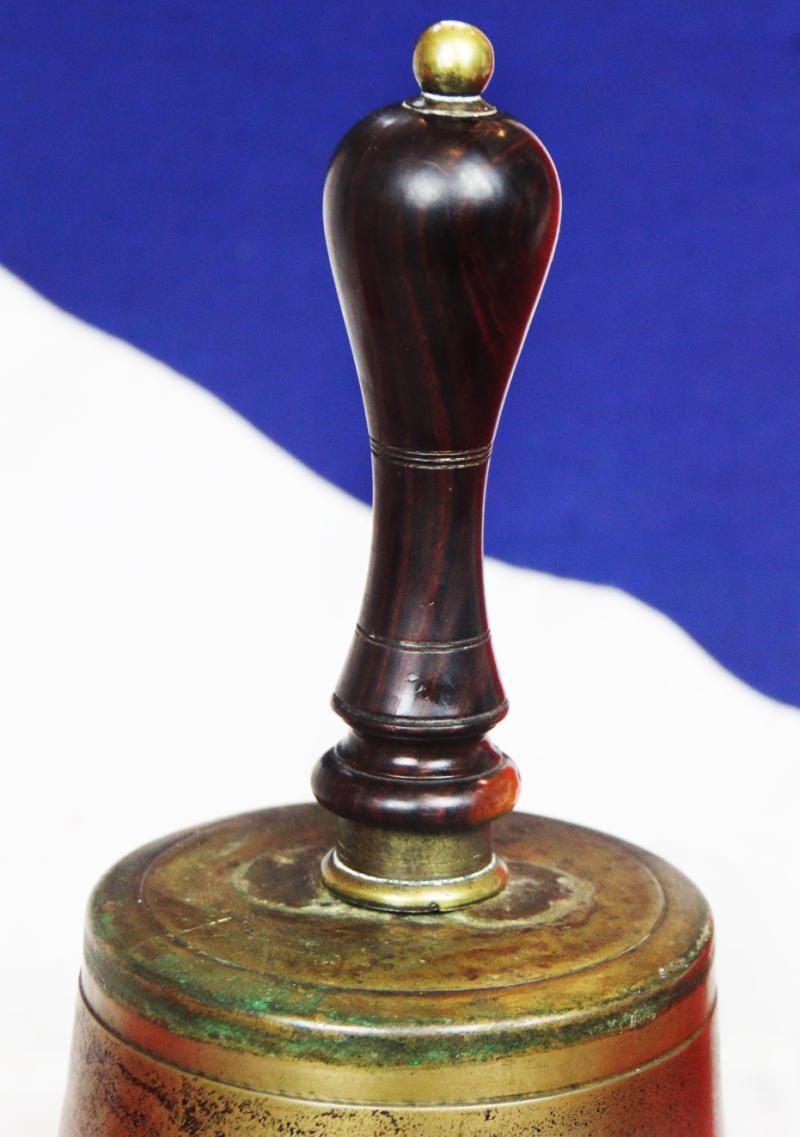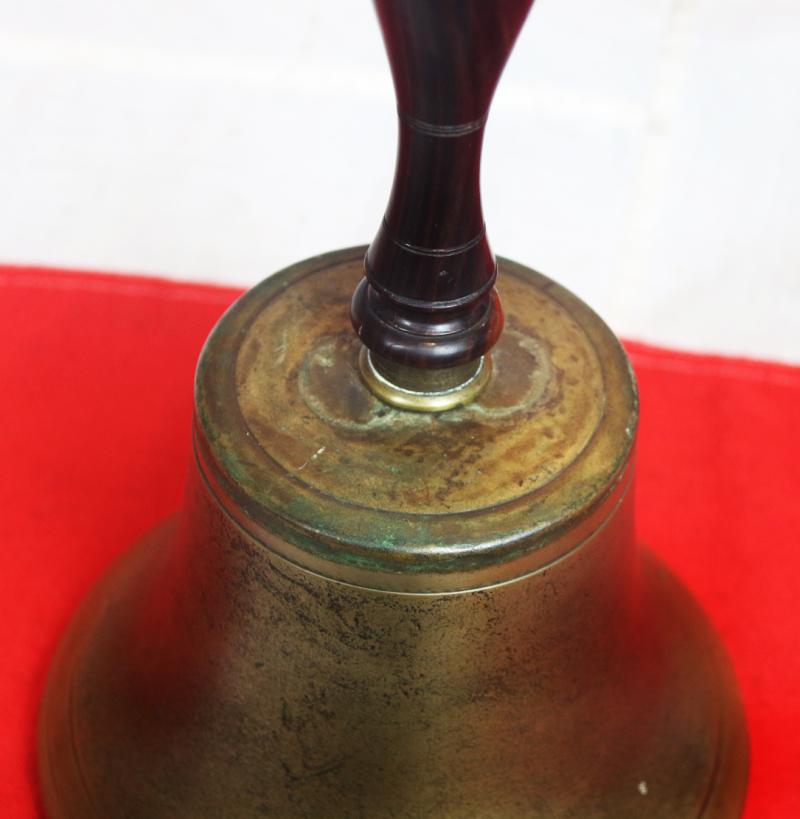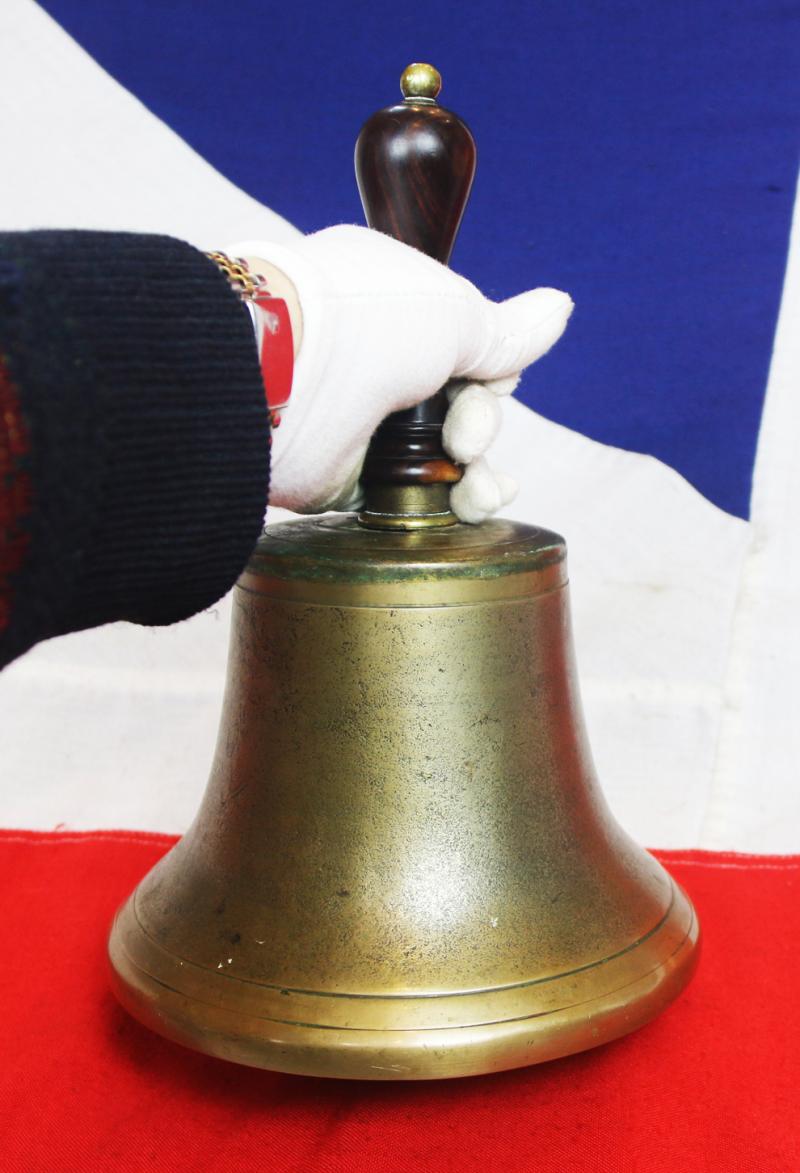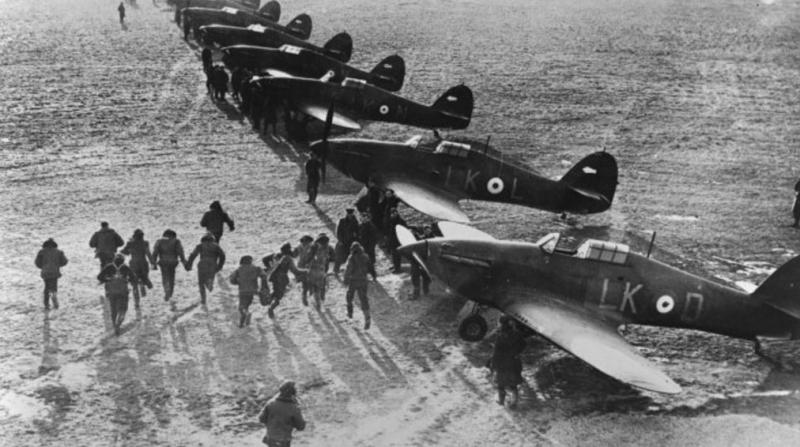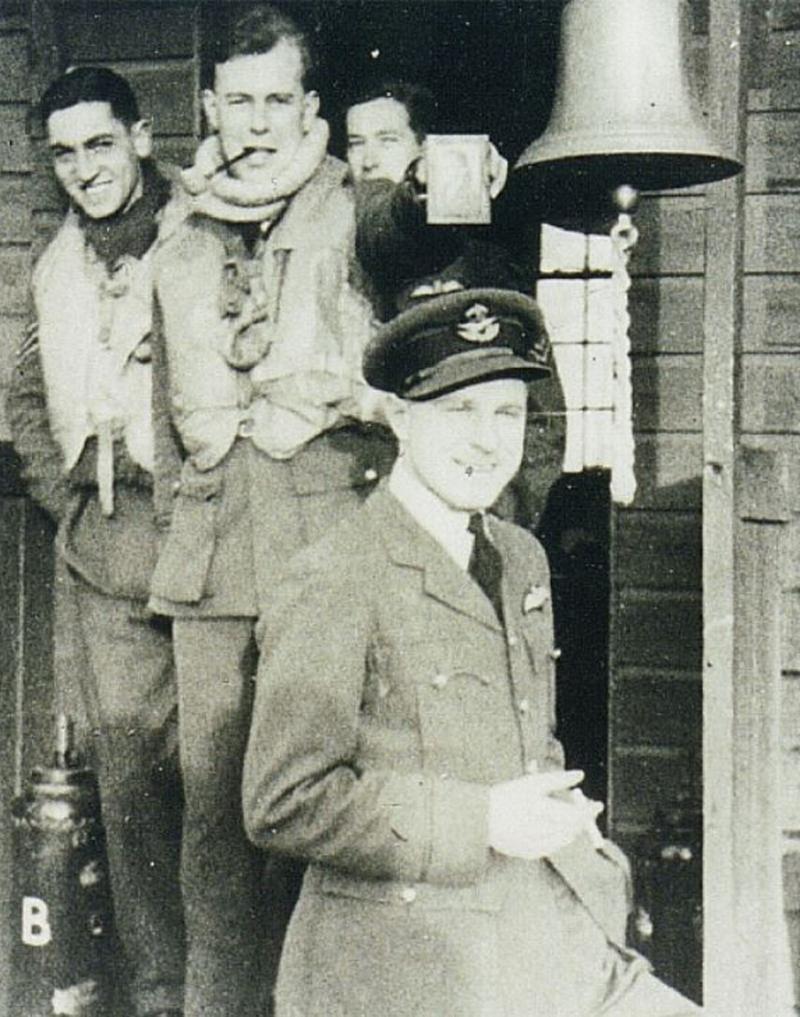An Original and Superb WW2 RAF Air Ministry Issue 'Scramble Bell', Cast Bronze With Turned Hardwood Handle On A Brass Socket Mount With Brass Ball Top. Interior Bears The AM Crown Mark of the Air Ministry Contract
An iconic centre piece of any collection from the most renowned and famed era of the British RAF. This would would make an amazing addition to any collection, or display, or a unique historic gift for any collector of aeronautica.
A most scarce, original, 'Battle of Britain' piece of original, RAF Air Ministry issue aeronautica, an original brass bracket mounted then hand-held 'scramble' bell, complete with its wooden handle, stamped AM Crown, marked with crown and initials AM, Used at an RAF air base. Made in the period when the RAF knew very well that war was imminent and very likely, and it was used throughout the entire war, right from the 'Battle of Britain' period. It’s diameter of the bell is 200 mm, and height 300 mm approx, it weighs, 3.15 kilos.
A very fine example, in super condition, of an original RAF scramble bell from a RAF base, such as RAF North Weald, as it likely came from that location area, another that came from RAF Debden, an airfield 3 miles south east of Saffron Waldon in Essex, was sold over six years ago for 2,500 at auction in New York.
This hand bell would have been rung when instructions came through from HQ of an imminent attack by the feared and deadly Luftwaffe Bombing Squadrons, in order to scramble the bravest of the brave, the frighteningly young, RAF, RAAF or RCAF pilots into the air. During the Battle of Britain and beyond the average age of the pilots was just 20 years old, of the 2,937 British and Allied aircrew. Britain aircrew were flying multiple sorties a day to intercept the relentless Luftwaffe raids over the British skies, Aircrew from sixteen nationalities flew and fought together against the Luftwaffe, who outnumbered the RAF in both aircraft and pilots.
Against all odds, the RAF defeated the Luftwaffe. Hitler was forced to abandon his plans to invade Britain.
544 aircrew were killed during the Battle of Britain. A further 422 aircrew were wounded. Almost a third of all the men that flew.
British Prime Minister, Winston Churchill, famously expressed the incredible debt owed to the Battle of Britain aircrew:
“Never in the field of human conflict has so much been owed by so many to so few.”
During WW2 the world's premier gallantry medals were granted to air Force personnel, 22 Victoria Crosses were awarded, and 2,001 Air Force Crosses were Awarded, 26 were awarded to the same recipient twice, and just 1 was awarded to the same man three times.
Throughout the summer of 1940, across England, on hundreds of grass makeshift runways, with young eager pilots that awaited in huts for the bell to be rung, then rushing ‘hell for leather’ to their fighter planes, in order to attack the German bomber and fighter formations descending on vulnerable Southern England. Such as RAF Debden, in Essex, that was built in April 1937, with the tarmac airstrip laid in 1940. It was a sector station for 11 Group RAF. Many British Hurricane and Spitfire squadrons were based at Debden, including number 17 squadron throughout the Battle of Britain. In September 1942, it was handed over to the USAAF, as part of British support for the American bombing campaign in Europe. The Battle of Britain (German: Luftschlacht um England, literally "The Air Battle for England") was a military campaign of the Second World War, in which the Royal Air Force (RAF) defended the United Kingdom (UK) against large-scale attacks by Nazi Germany's air force, the Luftwaffe. It has been described as the first major military campaign fought entirely by air forces. The British officially recognise the battle's duration as being from 10 July until 31 October 1940, which overlaps the period of large-scale night attacks known as the Blitz, that lasted from 7 September 1940 to 11 May 1941. German historians do not accept this subdivision and regard the battle as a single campaign lasting from July 1940 to June 1941, including the Blitz.
The primary objective of the German forces was to compel Britain to agree to a negotiated peace settlement. In July 1940 the air and sea blockade began, with the Luftwaffe mainly targeting coastal-shipping convoys, ports and shipping centres, such as Portsmouth. On 1 August, the Luftwaffe was directed to achieve air superiority over the RAF with the aim of incapacitating RAF Fighter Command; 12 days later, it shifted the attacks to RAF airfields and infrastructure. As the battle progressed, the Luftwaffe also targeted factories involved in aircraft production and strategic infrastructure. Eventually it employed terror bombing on areas of political significance and on civilians.
The Germans had rapidly overwhelmed France and the Low Countries, leaving Britain to face the threat of invasion by sea. The German high command knew the difficulties of a seaborne attack and its impracticality while the Royal Navy controlled the English Channel and the North Sea. On 16 July, Adolf Hitler ordered the preparation of Operation Sea Lion as a potential amphibious and airborne assault on Britain, to follow once the Luftwaffe had air superiority over the UK. In September, RAF Bomber Command night raids disrupted the German preparation of converted barges, and the Luftwaffe's failure to overwhelm the RAF forced Hitler to postpone and eventually cancel Operation Sea Lion. Germany proved unable to sustain daylight raids, but their continued night-bombing operations on Britain became known as the Blitz.
Historian Stephen Bungay cited Germany's failure to destroy Britain's air defences to force an armistice (or even outright surrender) as the first major German defeat in World War II and a crucial turning point in the conflict. The Battle of Britain takes its name from a speech by Winston Churchill to the House of Commons on 18 June: "What General Weygand has called The Battle of France is over. The Battle of Britain is about to begin." The scramble bell came three different forms, the larger mounted bell, with the same AM Air Ministry marks, but much heavier, so they had to be wall mounted, or on a free standing bracket, hanging outside of say, a hut, and this type the medium sized bracket mounted for hanging outside of a hut, but as this one with an added handle, which was naturally much somewhat portable, and ideal for emergency RAF bases and landing strips, created with makeshift or tented non-permanent buildings. And the smaller regular contract hand-bell was also ideal in those bases.
Code: 25232
1795.00 GBP


